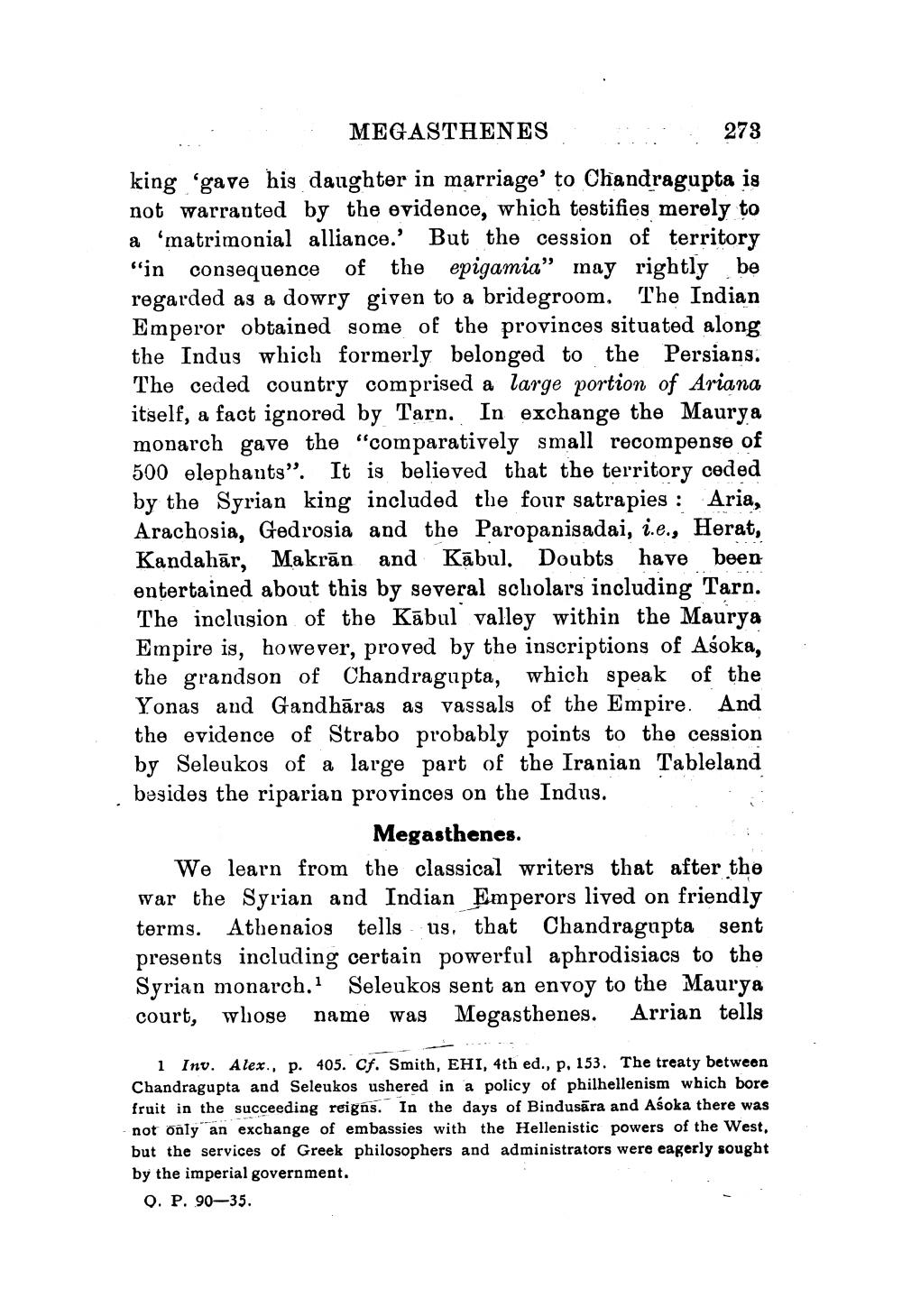________________
MEGASTHENES
273 king 'gave his daughter in marriage' to Chandragupta is not warranted by the evidence, which testifies merely to a 'matrimonial alliance. But the cession of territory “in consequence of the epigamia” may rightly be regarded as a dowry given to a bridegroom. The Indian Emperor obtained some of the provinces situated along the Indus which formerly belonged to the Persians. The ceded country comprised a large portion of Ariana itself, a fact ignored by Tarn. In exchange the Maurya monarch gave the "comparatively small recompense of 500 elephants”. It is believed that the territory ceded by the Syrian king included the four satrapies : Aria, Arachosia, Gedrosia and the Paropanisadai, i.e., Herat, Kandahār, Makrān and Kābul. Doubts have been entertained about this by several scholars including Tarn. The inclusion of the Kābul valley within the Maurya Empire is, however, proved by the inscriptions of Asoka, the grandson of Chandragupta, which speak of the Yonas and Gandhāras as vassals of the Empire. And the evidence of Strabo probably points to the cession by Seleukos of a large part of the Iranian Tableland besides the riparian provinces on the Indus.
Megasthenes We learn from the classical writers that after the war the Syrian and Indian Emperors lived on friendly terms. Athenaiog tells us, that Chandragupta sent presents including certain powerful aphrodisiacs to the Syrian monarch. Seleukos sent an envoy to the Maurya court, whose name was Megasthenes. Arrian tells
1 Inv. Alex., p. 405. Cf. Smith, EHI, 4th ed., p. 153. The treaty between Chandragupta and Seleukos ushered in a policy of philhellenism which bore fruit in the succeeding reigns. In the days of Bindusāra and Asoka there was not only an exchange of embassies with the Hellenistic powers of the West, but the services of Greek philosophers and administrators were eagerly sought by the imperial government.
Q. P. 90-35.




